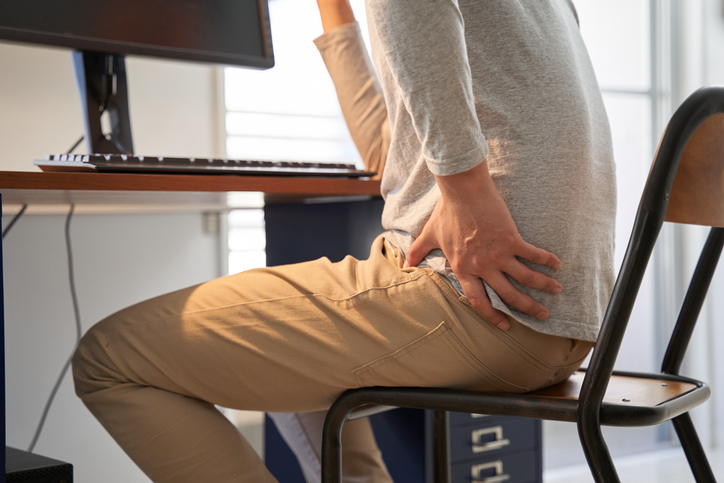Living with hip and knee pain can be incredibly challenging, impacting one’s ability to perform everyday tasks and diminishing the overall quality of life. However, with the advent of physical therapy, there is hope for effective pain management and relief. In this blog, we will explore how physical therapy can alleviate hip and knee pain, allowing individuals to regain their mobility and independence.
Understanding Hip and Knee Pain
a. Causes of Hip Pain
Hip pain can arise from various conditions, including osteoarthritis, bursitis, hip impingement, and muscle strains or tears. Understanding the underlying cause is essential for effective treatment.
b. Causes of Knee Pain
Knee pain commonly stems from factors such as osteoarthritis, ligament injuries (ACL, MCL), meniscus tears, and patellofemoral pain syndrome. Identifying the root cause helps in tailoring appropriate interventions.
The Role of Physical Therapy in Pain Management
a. Comprehensive Assessment
Physical therapists conduct a thorough assessment, including reviewing medical history, performing a physical examination, and assessing functional limitations. This information guides the development of an individualized treatment plan.
b. Individualized Treatment Plan
Physical therapists create customized treatment plans based on the assessment results. These plans may include pain relief modalities like ice or heat therapy, manual therapy techniques, targeted strengthening exercises, and stretching and flexibility exercises.

Benefits of Physical Therapy for Hip and Knee Pain Relief
a. Pain Reduction
Physical therapy offers targeted pain management strategies that alleviate discomfort without relying solely on medication. Through joint mobilization techniques and other interventions, physical therapists help patients find relief from hip and knee pain.
b. Improved Mobility and Function
Strengthening weak muscles and restoring joint range of motion are central to physical therapy. By targeting specific muscle groups and implementing exercises and techniques, physical therapists help patients regain mobility and improve overall function.
c. Avoidance of Surgery
In some cases, physical therapy can serve as a viable alternative to surgery. Physical therapists may engage in prehabilitation, optimizing the patient’s physical condition before surgery to enhance postoperative outcomes. For certain conditions, conservative management through physical therapy may eliminate the need for surgery altogether.
d. Long-term Rehabilitation
Physical therapy is not just about immediate pain relief; it also focuses on long-term rehabilitation. Through exercise routines tailored to the individual’s needs, physical therapists help patients maintain strength, flexibility, and joint health, preventing future injuries and promoting overall well-being.
Get a Consultation Today!!
Techniques and Interventions Used in Physical Therapy
a. Manual Therapy
Physical therapists employ various manual therapy techniques to address hip and knee pain. Joint mobilization involves gentle movements to improve joint function, while soft tissue mobilization and myofascial release target muscles, tendons, and ligaments for pain relief and improved flexibility.
b. Therapeutic Exercises
Targeted therapeutic exercises are crucial components of physical therapy. Strengthening exercises such as squats and lunges help stabilize the hip and knee joints, range of motion exercises improve flexibility, and balance and proprioception exercises enhance stability and coordination.
c. Neuromuscular Reeducation
Physical therapists focus on retraining movement patterns to improve gait, functional movements, and posture. Through gait training and functional exercises, patients can restore normal movement and reduce pain.
d. Modalities
Physical therapists may also employ various modalities to supplement treatment. Heat and cold therapy, electrical stimulation, and ultrasound therapy can provide pain relief, reduce inflammation, and enhance tissue healing.
Role of Physical Therapist in Hip and Knee Pain Management
a. Education and Empowerment
Physical therapists play a vital role in educating patients about their condition and treatment options. They explain the benefits of physical therapy, teach self-management techniques, and guide patients in making lifestyle modifications to support their recovery.
b. Collaborative Care
Physical therapists often work in collaboration with other healthcare professionals to ensure comprehensive care for patients. They communicate and coordinate with orthopedic surgeons, primary care physicians, and other specialists to optimize treatment outcomes.
The Importance of Consistency and Compliance
Maintaining consistency and adhering to the treatment plan provided by the physical therapist is crucial for long-term success. This section will emphasize the importance of following through with exercises, seeking ongoing guidance from the therapist, and integrating therapeutic activities into daily routines.
Conclusion
Physical therapy offers a comprehensive and effective approach to managing hip and knee pain. By addressing the root causes of pain, reducing discomfort, improving mobility and function, and providing long-term rehabilitation, physical therapy empowers individuals to overcome hip and knee pain and regain control over their lives. Consultation with a skilled physical therapist is a crucial step toward a pain-free future, allowing individuals to return to the activities they enjoy and experience an improved quality of life.

